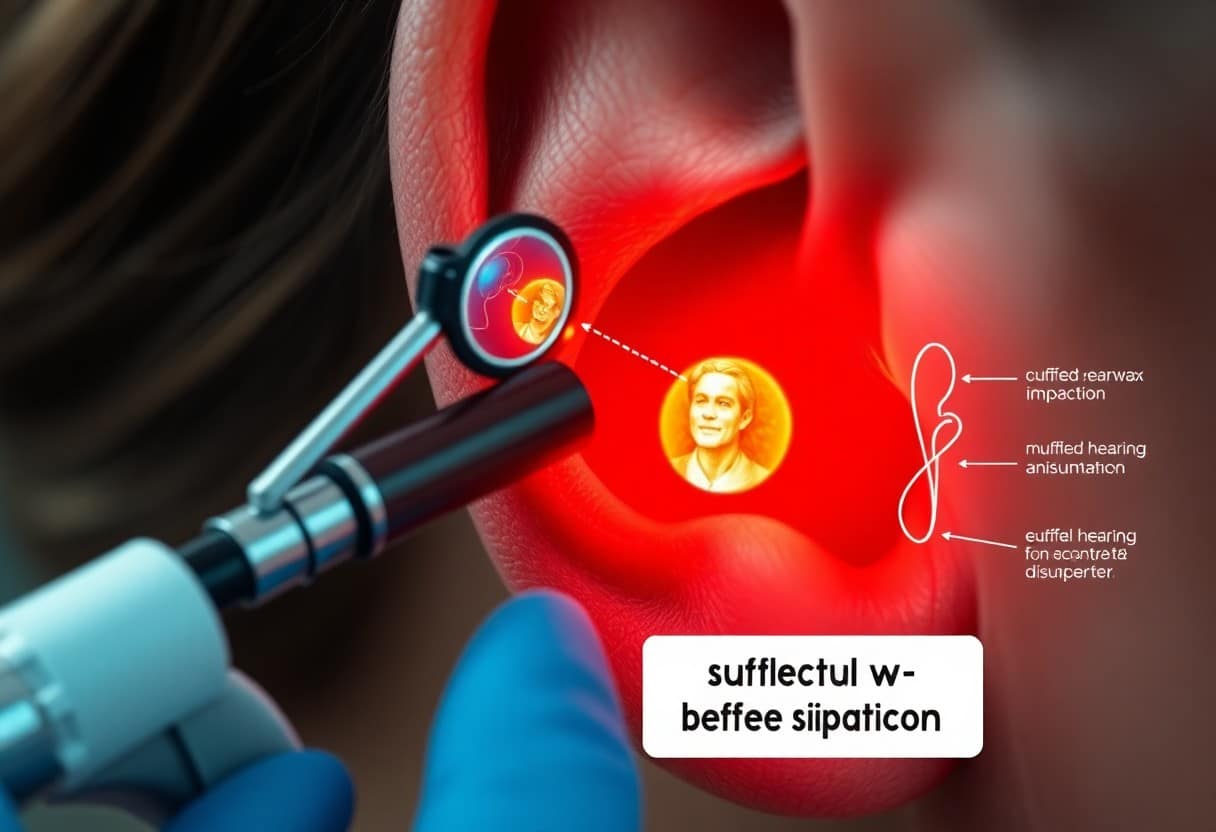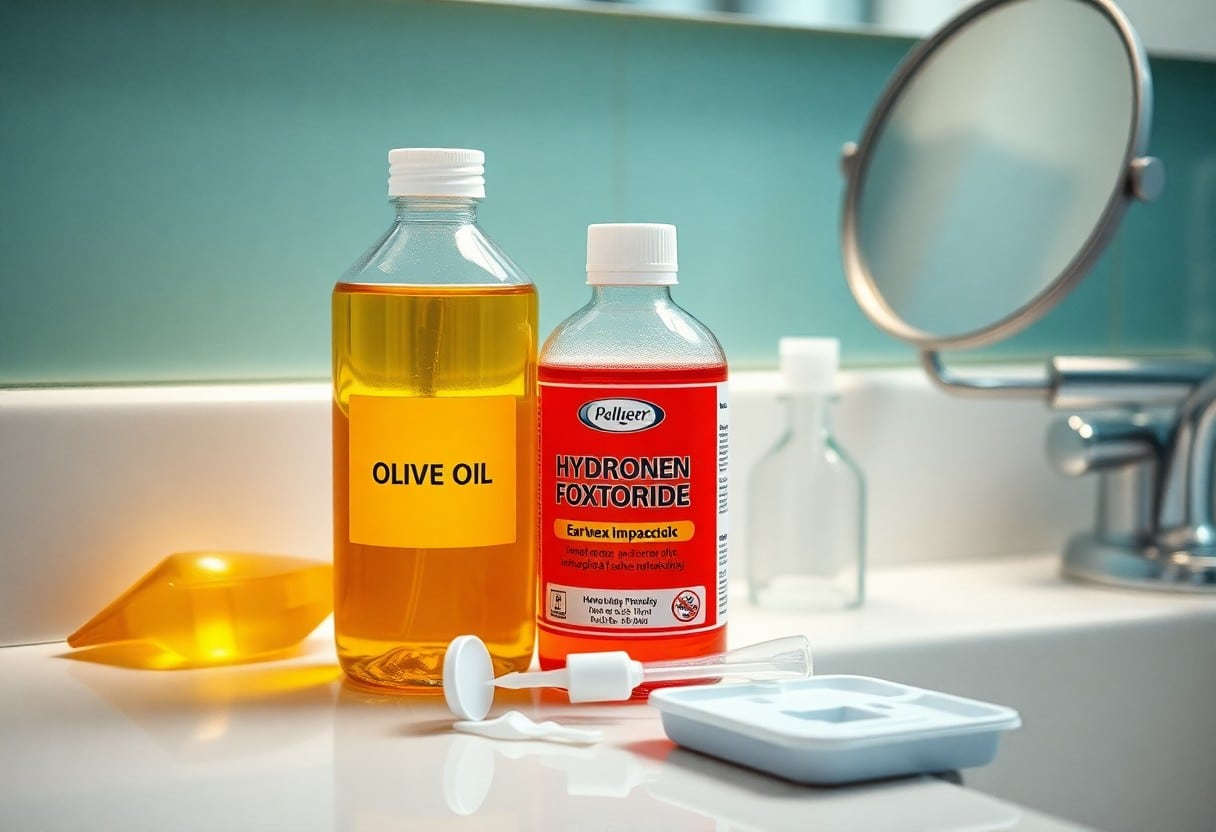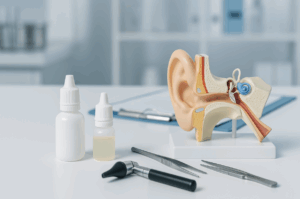Earwax is a natural substance that protects your ears, but when it accumulates excessively, it can lead to impaction. Understanding the signs of earwax impaction is vital for maintaining your ear health. If you experience symptoms such as muffled hearing, earache, or dizziness, these may indicate that you should seek medical attention. This guide will help you identify the top symptoms of earwax impaction you shouldn’t overlook, ensuring your ears remain healthy and free from blockage.
Key Takeaways:
- Common symptoms include earache, muffled hearing, and a sensation of fullness in the ear.
- It may cause dizziness or balance issues if the earwax blocks the ear canal significantly.
- Ignoring prolonged symptoms can lead to potential infections or further hearing impairment.
The Anatomy of Earwax: What You Need to Know
The Natural Function of Earwax
Your ears produce earwax, or cerumen, to serve necessary protective functions. It traps dust, debris, and microorganisms, preventing them from entering the ear canal and potentially causing infections. Additionally, earwax helps maintain moisture in the ear canal, which can prevent dryness and irritation. The natural movement of your jaw while eating or talking gradually moves this wax towards the outer ear, where it can be washed away or flaked off.
Common Misconceptions About Earwax
Many people hold misconceptions about earwax, leading to either unnecessary worry or ineffective cleaning methods. A prevalent belief is that earwax buildup is solely a sign of poor hygiene. In reality, the production of earwax varies among individuals and can be influenced by genetics, environment, and even age. Regular earwax buildup can be entirely normal and not indicative of an issue.
Another misconception is that using cotton swabs is an effective method for cleaning earwax. This practice can push wax deeper into the ear canal, potentially causing blockage. Moreover, some might think that all earwax is dirty and needs removal, which is misleading. In fact, earwax plays a protective role and is healthy in moderation. Distinguishing between normal and problematic earwax is necessary for maintaining ear health.
Recognizing the Signs of Earwax Buildup
Discomfort and Pressure in the Ear
You may experience a persistent feeling of discomfort or pressure in your ear, which can be quite distracting. This sensation often results from excessive earwax creating a blockage, pressing against the eardrum. As the buildup intensifies, the discomfort can escalate, making it feel like something is lodged within your ear, affecting your daily activities.
Sudden Hearing Changes
A noticeable and sudden change in your hearing capabilities can be alarming. Earwax impaction can lead to muffled sounds or a decreased ability to hear clearly. This blockage prevents sound waves from reaching the eardrum effectively, causing an abrupt shift in how you perceive sounds around you.
These hearing changes can happen quickly, often described as a sudden loss or muffling of sound in one or both ears. You might find it challenging to follow conversations, particularly in noisy environments. This symptom could vary in severity; in some cases, it may even feel like you have “water in your ear.” If you notice these changes, it’s necessary to assess whether earwax buildup may be the underlying cause.
The Most Telling Symptoms of Earwax Impaction
Chronic Earaches: When to Seek Help
Chronic earaches can often indicate underlying problems related to earwax impaction. If you experience persistent pain that doesn’t respond to over-the-counter pain relief or lasts more than a few days, seeking medical attention is vital. Ignoring these symptoms can lead to complications, including infections or damage to the ear canal, which may worsen without appropriate treatment.
Tinnitus: The Ringing Alarm
Tinnitus, characterized by a ringing, buzzing, or hissing noise in your ears, is a significant indicator of earwax impaction. This symptom can range from mild distractions to severe disturbances in daily life. If you notice a consistent ringing sound, it’s advisable to consult a healthcare professional for an assessment of your ear health.
Research shows that tinnitus affects nearly 15% of the population, with earwax blockage being one of the common contributing factors. This sound often signals a disruption in the usual auditory processing, which can occur due to pressure from accumulated wax against the eardrum. A thorough evaluation can help determine if the tinnitus is a direct result of earwax accumulation or if there are other underlying issues that require attention.
The Role of Earwax in Ear Health
Protecting Against Infections
Earwax plays a vital role in protecting your ears from infections by trapping dust, bacteria, and other foreign particles before they can reach sensitive ear structures. This natural barrier shields your eardrum and other inner ear components, reducing the risk of complications from infections. Proper levels of earwax can minimize inflammation and irritation, allowing for a healthier ear environment.
Balancing Moisture and Debris
The production of earwax helps maintain the right balance of moisture in your ears while preventing the buildup of debris. A healthy amount of cerumen keeps the ear canal lubricated, necessary for overall ear comfort and function. It effectively regulates the moisture levels in the ear, imperative for preventing dryness and irritation.
The consistency of earwax also contributes to balancing moisture and debris. Too much earwax can lead to impaction, causing discomfort and potential hearing issues, while insufficient wax can result in dry, itchy ears that may be more susceptible to irritants and infections. This balance ensures your ears remain healthy and free from unnecessary complications, highlighting why proper earwax maintenance is imperative for your auditory health.
How Lifestyle Choices Influence Earwax Production
Impact of Environmental Factors
Your environment plays a significant role in earwax production. Factors such as humidity, dust, and exposure to allergens can increase earwax buildup. Living in dry climates may lead your ears to produce more cerumen to compensate for moisture loss, while environments filled with dirt and pollutants can stimulate excess production to protect the inner ear.
- High humidity can increase earwax production.
- Dusty or polluted environments can lead to more cerumen buildup.
- Allergies may contribute to the body’s response in wax production.
- Any changes in your environment may influence earwax consistency and quantity.
The Effect of Ear Hygiene Practices
Poor ear hygiene can lead to excessive earwax accumulation, while over-cleaning can also disrupt natural production. Using cotton swabs or inserting objects into the ear canal often pushes wax deeper, causing impaction. Maintaining a balance is imperative; regular but gentle cleaning methods can help manage earwax levels without causing blockage.

Seeking Professional Help: When It’s Necessary
Evaluating the Severity of Symptoms
Assessing the severity of your symptoms will guide your decision to seek professional help. If you experience significant pain, hearing loss, or persistent discomfort that does not improve with home remedies, consulting a healthcare provider becomes necessary. Other warning signs include noticeable fluid discharge or a feeling of fullness in the ear, both indicating that earwax impaction may be serious enough to require medical intervention.
Understanding Treatment Options
Various treatment options are available for earwax impaction, especially when home remedies fail. A healthcare professional may use instruments to manually remove the blockage or recommend medicated ear drops to soften the wax for easier removal. In some cases, irrigation techniques may be employed, using a gentle stream of water to flush out the buildup safely.
If earwax impaction persists despite treatment efforts, healthcare providers may explore alternative methods like suctioning, where a specialized device gently vacuums out the wax. This method is particularly effective in cases where the wax is deeply lodged or excessively hard. Over-the-counter products, while helpful, may not address severe blockages, making professional evaluation imperative for relief and preventing further complications.

Home Remedies and Alternates: What Works
Safe Cleaning Techniques
Effective ear cleaning methods include using a damp cloth to wipe the outer ear, avoiding cotton swabs, and using over-the-counter ear drops designed to soften wax. You may also try flushing your ears with a saline solution or a mixture of hydrogen peroxide and water. These methods help prevent damage to your ear canal while addressing wax buildup.
Myths About Home Treatments
Many misconceptions surround home treatments for earwax impaction. One common myth is that inserting objects like bobby pins or cotton swabs into your ear canal is a safe way to remove earwax. This can actually push wax deeper and cause injury. Additionally, natural remedies like olive oil are often oversold as miracle cures, with little scientific evidence backing their effectiveness in severe cases.
Relying on myths can be detrimental to your ear health. For instance, some people believe that vacuuming the ear with a home device can safely remove wax; however, this can lead to trauma in the sensitive structures of the ear. Understanding the facts about earwax removal techniques reduces the risk of complications and ensures proper ear care, steering you away from ineffective or harmful practices.
The Long-Term Consequences of Ignoring Symptoms
Potential for Permanent Hearing Loss
Ignoring symptoms of earwax impaction can lead to permanent hearing loss. The blockage not only muffles sound but can also damage the delicate structures within the ear over time. Prolonged exposure to pressure and sound distortion may result in irreversible changes to your hearing capabilities, making it necessary to address issues early.
Risk of Ear Infections and Further Complications
A blocked ear can create a breeding ground for bacteria, significantly increasing the risk of ear infections. When fluid builds up behind the blockage, it may lead to painful conditions like otitis media. Persistent infections can result in complications, including chronic pain and more serious health issues.
Persistent ear infections caused by untreated earwax impaction are not just temporary nuisances; they can lead to severe complications such as hearing loss, tinnitus, and, in some cases, even balance issues. Continuous infections may require more extensive medical interventions and can have far-reaching effects on your overall health, including chronic pain that disrupts daily activities. Addressing symptoms promptly can prevent these long-term health repercussions and preserve your quality of life.
Summing up
Taking this into account, being aware of the top symptoms of earwax impaction is imperative for your ear health. If you experience symptoms like ear pain, a feeling of fullness in the ear, difficulty hearing, or tinnitus, it’s imperative that you seek medical advice. Ignoring these signs can lead to further complications and discomfort. Regularly monitoring your ear health and understanding these symptoms can help you address potential issues before they escalate.
FAQ
Q: What are the common symptoms of earwax impaction?
A: Common symptoms include ear fullness, hearing loss, earache, tinnitus (ringing in the ears), and dizziness.
Q: How can I tell if my hearing loss is due to earwax impaction?
A: If hearing loss is sudden and accompanied by other symptoms like fullness or discomfort in the ear, it may indicate earwax impaction.
Q: Should I attempt to remove earwax at home?
A: It is generally not advisable to remove earwax at home with cotton swabs or other objects, as this can push wax deeper and worsen the blockage. Consult a healthcare professional instead.
Q: When should I seek medical attention for earwax impaction?
A: Seek medical attention if you experience severe pain, persistent hearing loss, drainage from the ear, or if home remedies have not improved symptoms.
Q: Are there any risk factors for developing earwax impaction?
A: Risk factors include using hearing aids or earplugs, having narrow ear canals, and older age, as earwax may become drier and harder with time.



